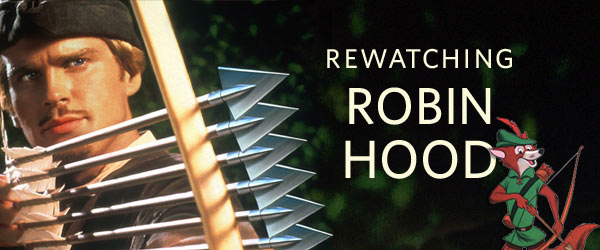There is no canonical Robin Hood story.
There’s no The Odyssey, or Sir Arthur Conan Doyle’s Sherlock Holmes stories, or the Bible. There’s no one text we can go back to and say “This is who Robin Hood is and should be.”
The adventures of Robin Hood are a collection of stories dating back to at least the 1400s, drawn from ballads and plays and may fair games, and they vary wildly. The only constant is that Robin is a heroic outlaw with a band of merry men. Everything else changes from story to story.
In some versions Robin of Loxley was born a noble, in others he was always a yeoman. Sometimes Maid or Lady Marian is his love interest, but sometimes he marries Matilda or Clorinda, Queen of the Shepherdesses. Sometimes he robs the rich to give to the poor, but sometimes he just robs the rich. Even the setting changes. Some ballads have Robin pardoned by King Edward (not specifying which Edward), while today we generally set Robin’s adventures in the late 12th century when King Richard the Lionhearted was off fighting the Third Crusade, and his brother John was left behind to heavily tax England (to, you know, pay for Richard’s Crusade).
The closest to a canonical text is Howard Pyle’s The Merry Adventures of Robin Hood (1883). Pyle’s collection of short stories codified the important episodes in Robin Hood’s story: fighting Little John with quarterstaves; tricking Friar Tuck into carrying him across the river; wooing Marian; entering an archery contest in disguise; a daring prison break; and King Richard’s return.
Even Pyle’s version leaves out parts of the story. Pyle cleaned the stories up for a children’s audience, removing much of the sex and focusing on protection of the poor. Also Pyle keeps Robin a local hero uninterested in who is king. Richard, John, and the Crusades are only mentioned in passing as why the Sheriff of Nottingham can get away with as much as he does.
The lack of a definitive version means anyone creating a new version of Robin Hood has a lot to play with. Robin Hood stories vary to reflect the times they’re made in and the priorities of new storytellers. Robin can be a nationalist figure, a deposed noble seeking to restore the true king to power. Or he can be a communist revolutionary, fighting an oppressive government to redistribute wealth to the neediest. Or he can be an anarchist rogue, living outside the laws and conventions of normal society because he’s just got to be free.
Which is one reason I’m spending the holidays watching Robin Hood movies. The other reason is that they’re fun!
There are more Robin Hood movies than there are days of Christmas, so we’re sticking with five major films from the last century: The Adventures of Robin Hood (1938), Disney’s Robin Hood (1973), Robin Hood: Prince of Thieves (1991), Robin Hood: Men in Tights (1993), and Robin Hood (2010). Seeing how the legend changes in the telling from the late thirties to today reflects changing ideas about economic justice, racial and gender roles, the history of the English crown.
And like any worthwhile academic pursuit, this one comes with a drinking game!
So pull up a flagon of mead, sit down in front of the couch, and drink along with us as we try to determine how good these Robin Hood movies are at hitting the mark!
Steven Padnick is a freelance writer and editor. By day. You can find more of his writing and funny pictures at padnick.tumblr.com.










